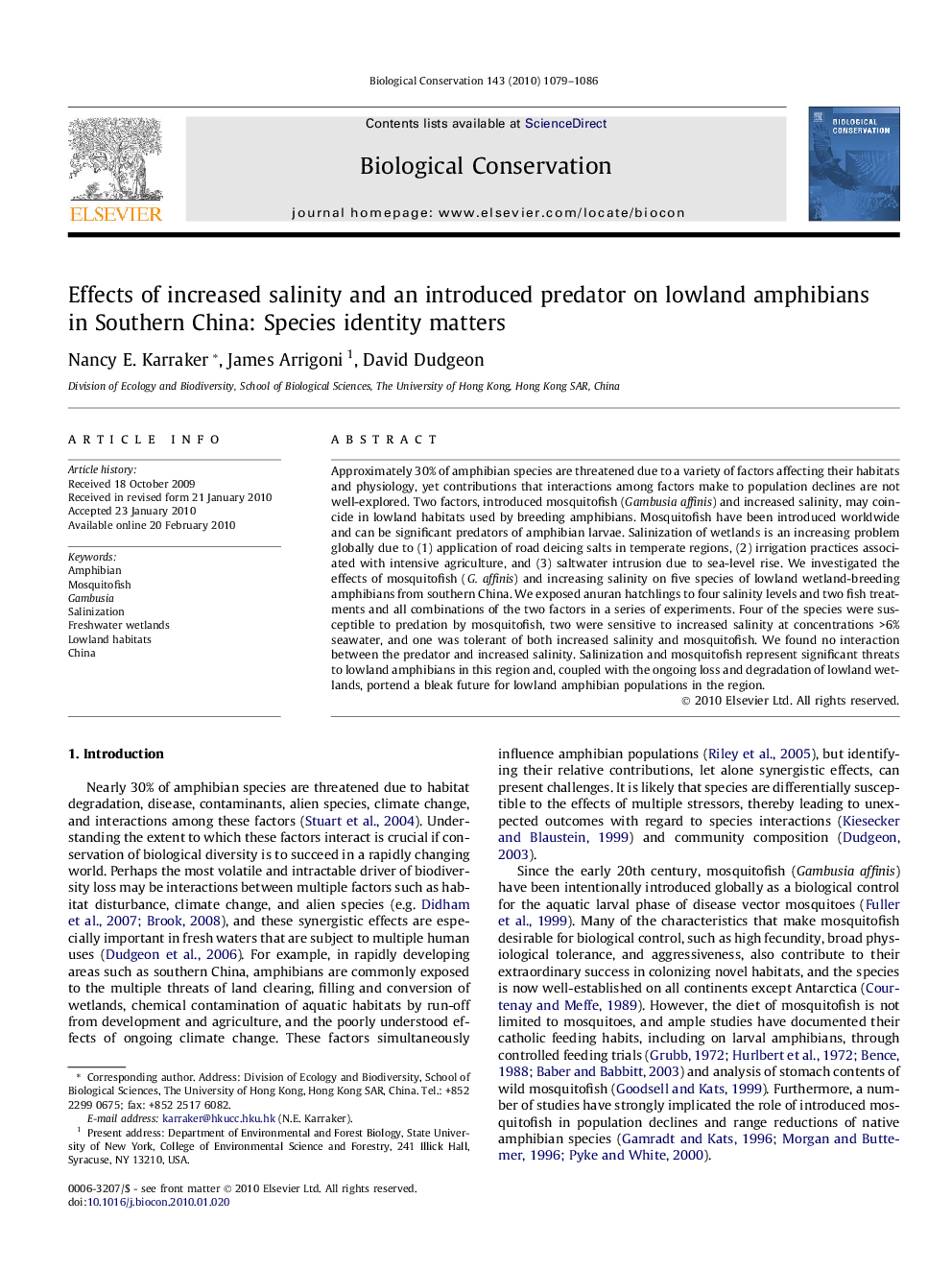| کد مقاله | کد نشریه | سال انتشار | مقاله انگلیسی | نسخه تمام متن |
|---|---|---|---|---|
| 4386316 | 1304563 | 2010 | 8 صفحه PDF | دانلود رایگان |

Approximately 30% of amphibian species are threatened due to a variety of factors affecting their habitats and physiology, yet contributions that interactions among factors make to population declines are not well-explored. Two factors, introduced mosquitofish (Gambusia affinis) and increased salinity, may coincide in lowland habitats used by breeding amphibians. Mosquitofish have been introduced worldwide and can be significant predators of amphibian larvae. Salinization of wetlands is an increasing problem globally due to (1) application of road deicing salts in temperate regions, (2) irrigation practices associated with intensive agriculture, and (3) saltwater intrusion due to sea-level rise. We investigated the effects of mosquitofish (G. affinis) and increasing salinity on five species of lowland wetland-breeding amphibians from southern China. We exposed anuran hatchlings to four salinity levels and two fish treatments and all combinations of the two factors in a series of experiments. Four of the species were susceptible to predation by mosquitofish, two were sensitive to increased salinity at concentrations >6% seawater, and one was tolerant of both increased salinity and mosquitofish. We found no interaction between the predator and increased salinity. Salinization and mosquitofish represent significant threats to lowland amphibians in this region and, coupled with the ongoing loss and degradation of lowland wetlands, portend a bleak future for lowland amphibian populations in the region.
Journal: Biological Conservation - Volume 143, Issue 5, May 2010, Pages 1079–1086